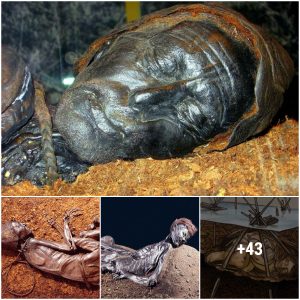When a boatful of scientists and tourists recently came across several orcas attacking a minke whale off Russia’s Kamchatka Peninsula, they knew they were in luck.

It was not only a chance to witness the little-seen phenomenon up close, but to record (via underwater microphone) the rarely heard calls the carnivorous mammals make after a 𝓀𝒾𝓁𝓁.

The scientists also deployed a drone, which gave them an unusual aerial view of the attack.
“The orcas went after the whale for a long time, the drone was up in the air when it practically stopped resisting—it was tired

but still sprayed water from the blowhole,” says Inessa Yuryeva, a coordinator for Team Trip, a partnership between the Far Eastern Russian Orca Project and the tour company Kosatka Cruises.
Mikhail Korostelev, who shot the video, is the founder of Team Trip, an adventure tourism organization that helps finance orca research not typically covered by Russia’s scientific institutes.

“Everyone was very excited—of course it is awful to see the whale suffer, but this is nature, and it is magnificent to come across a rare sight like an orca hunt up close,” said Yuryeva.
Orcas are the only universal predators among cetaceans, able to subsist on both fish and other mammals, including other dolphins and whales.

In general, resident orcas—those that live in the same place year-round—eat fish and squid, while transient orcas, the scarcer type, take down bigger prey.

For instance, there are around 800 fish-eating orcas in Kamchatka and only about 200 in the entire Russian Far East.

The two types don’t interbreed and have different social structures, and wide-ranging transients also have higher intelligence necessary to hunt other intelligent marine mammals.
Mammal-hunting orcas are also the reason for the species’ fearsome nickname, 𝓀𝒾𝓁𝓁er whales.

“The Tastiest Part”
Transient orca families, up to five individuals, work together to hunt a large mammal by chasing and weighing it down in the water until it drowns.

Most likely the orca group in the video consisted of two families, which included both adults and youths, says Tatiana Ivkovich, a biologist with the Far East orca project who witnessed the encounter.

“To 𝓀𝒾𝓁𝓁 a whale is very difficult and takes a lot of energy, but they can do this by cooperating, and the whale is large so it provides food for everybody.”

The orcas went first for the minke whale’s tongue, “the tastiest part,” Ivkovich says.

“But our orcas ate other parts of the whale, they tugged at it for a long time and left only a dorsal fin behind.”
To identify individual 𝓀𝒾𝓁𝓁er whales, scientists take note of the animal’s dorsal fin and saddle patches behind the fin, which differ in size and shape from one animal to another.

According to Ivkovich, scientists had never seen this particular pod. “Most likely, we’ve come across them for the first time.”

Whale of a Call
Orcas make calls, whistles, and clicks, the latter of which aids in echolocating, or using built-in sonar to sense their surroundings.

Orca groups have their own dialects, which are passed down through generations and help the animals keep track of family members.
Studying these sounds allows researchers to study their family and social structures, which are among th e most complex among mammals.

But because of their covert hunting methods, transient orcas are not very talkative.

“Mammal-eating orcas are silent almost all the time and make calls after hunting, so their acoustic behavior is less studied than that of the fish-eating orcas,” says Ivkovich.

But the orcas that 𝓀𝒾𝓁𝓁ed the minke called and echolocated for at least two hours, delighting the scientists.

The team plans to analyze the audio further, but preliminary results show that these transient orcas chatter as much as a pod of residents.

Ref: theguardian, livescience, regionalposts, abc.net.au, watoday, nationalgeographicPic: livescience, wikipedia, regionalposts, Naturaliste Charters Whale Watching, cnn, earthtouchnews





